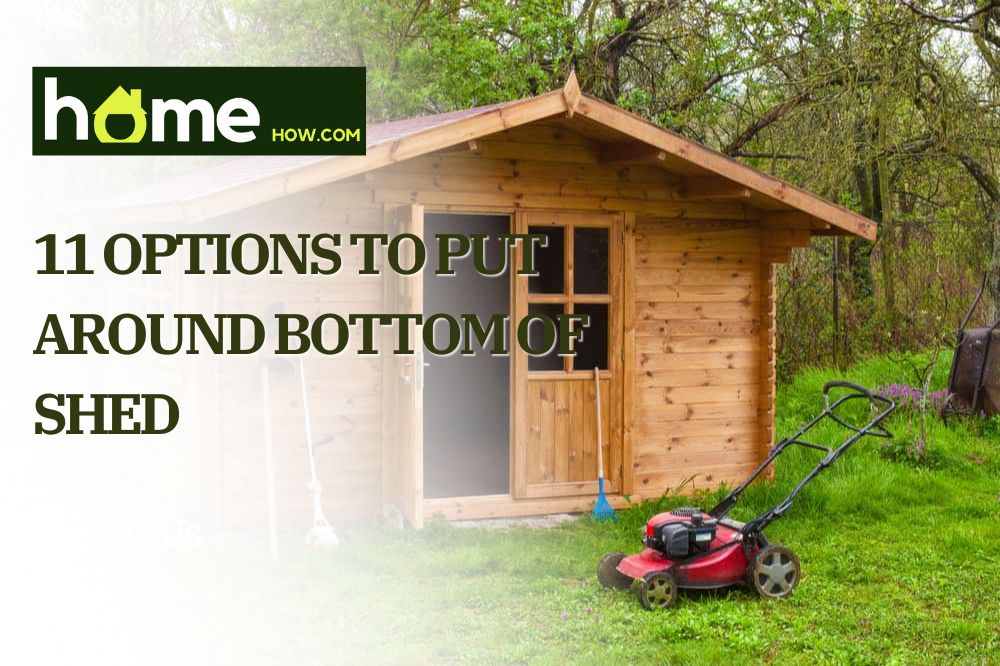Are you wondering what materials to put at the bottom of your shed? Did you know that the safety of your shed will depend on a well-built foundation? A well-built shed will stand for many years, but only if constructed on a solid foundation.
The foundation of your shed is where all its parts are attached together to make it stronger, sturdier, and more resistant to the weather. We have listed down some ingenious methods that you can use to close off the bottom of your shed. Keep reading to learn more!
What to Put Around The Bottom of a Shed?
The bottom of a shed is the most crucial part of a shed. Here is a list of materials you can use to make the bottom of your shed sturdy
1. Concrete Blocks and Bricks
Concrete blocks and bricks are the most common choice for the bottom of your shed. These will provide a level, durable surface that is easy to clean. They also offer protection from moisture and snow, which can cause damage to other materials in your shed. Concrete blocks are available in various sizes, so you can select ones that suit your needs.
2. Metal Panels
Metal panels are an excellent option for creating a patio on the bottom of your shed. These materials are solid and durable, which means they can withstand the elements very well. You can purchase metal panels in various sizes and thicknesses 一 choose the size that will fit best around your shed’s footprint. You can also find metal sheeting that comes in rolls or sheets, which allows you to cut it to the size you need.
3. Mobile Home Skirting Panels
Mobile home skirting panels protect your floors by preventing dirt and debris from getting inside your shed. They also help keep moisture away from your bed by trapping it within the panel. If you live in an area with lots of rainy days, having something covering the bottom of your shed will help prevent damage to your flooring and keep moisture out.
4. Cinder Block
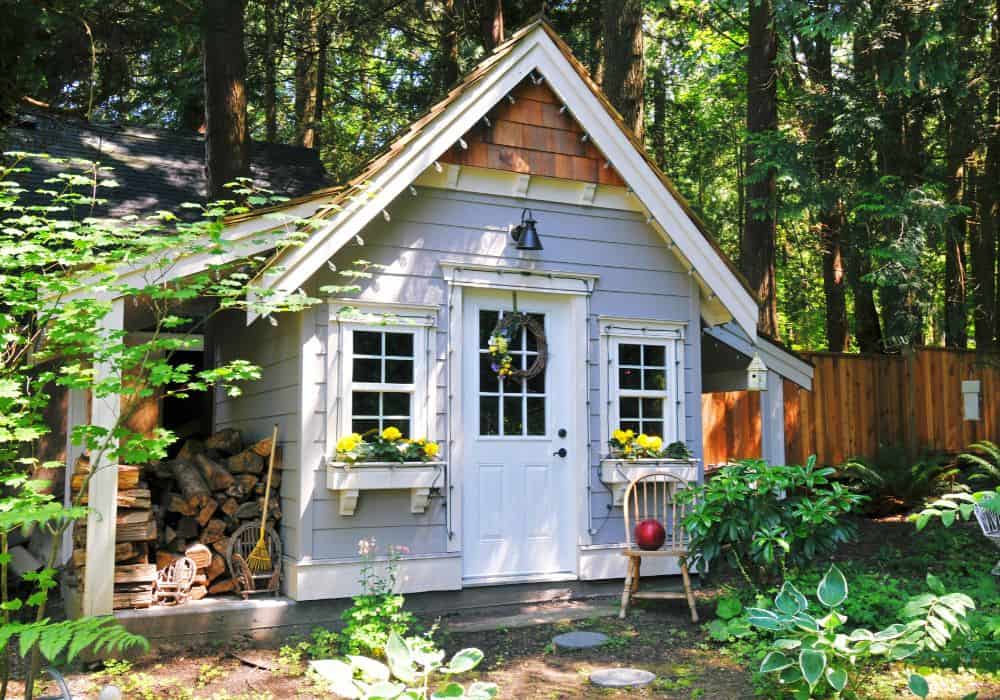
Cinder blocks also work well on the bottom of a shed because they provide stability and strength while allowing proper ventilation underneath them. It is essential to ensure that there is enough room between cinder blocks so air circulation can happen properly. For this reason, make sure that you measure carefully before laying down the cinder.
5. Gravel
Gravel is an excellent material to fill the under the shed and helps discourage pests and rodents. To hold the gravel, it’s a good idea to install landscaping timbers.
Gravel foundations are built with crushed stone or limestone because they’re economical, versatile, and durable. Gravel is a great choice for sloped areas since it can be easily customized to place the shed door near the ground floor.
6. Vinyl Panels
A vinyl panel is an excellent option if you want something that looks like wood but is better than paint. Vinyl panels come in different colors and textures, so you can choose which one looks best with your home’s style. They are also easy to install because they attach directly to the building structure.
You can also use vinyl panels to cover up old wooden floors that may have come from another structure or patio enclosure and could be causing issues with moisture or structural damage to your shed floor itself. Vinyl also makes it easy to clean up spills when they do occur, making cleanup much more effortless.
7. Lattice
Lattice is a great way to add an element of color and texture to your shed. If you are not using the whole space of the shed, the lattice can be placed around the bottom and sides.
8. Faux Stone
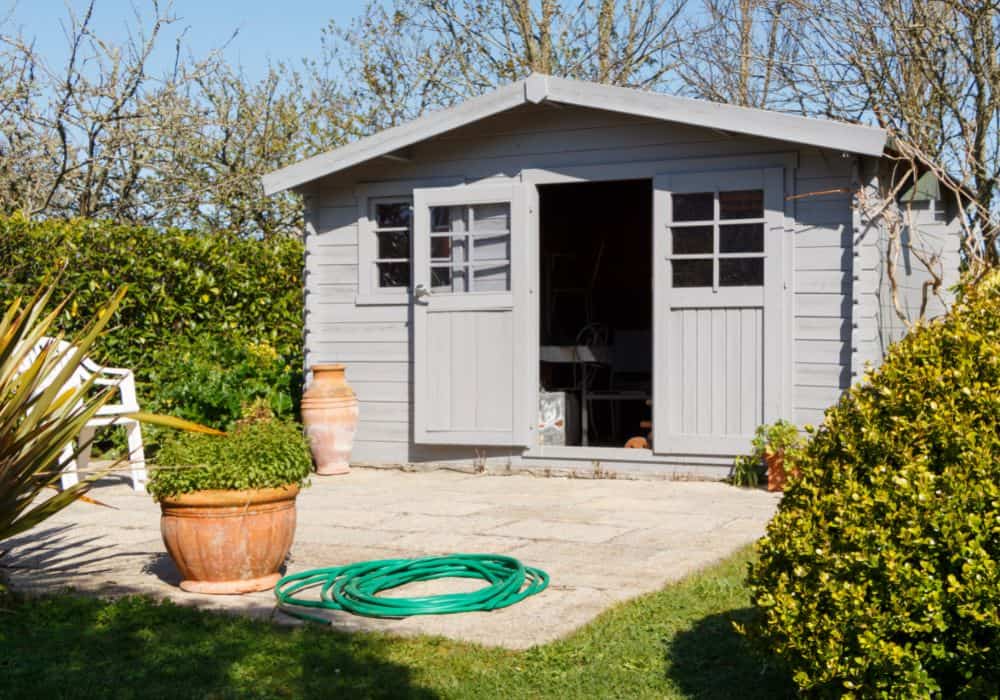
Faux stone comprises resin, glue, and crushed granite or concrete. The result is a stone look without the cost or mess involved in planting genuine stones.
A faux stone wall is excellent for adding visual interest to your shed. The stone will give the shed an authentic look, especially if you have an older shed that doesn’t have any natural stone. It will also help to keep the weight down so that your walls don’t sag or buckle over time.
The thickness of this material varies, but generally, it will be about 1/2 inch thick. If you want to use this material on a covered porch or patio area, you will need to add more than one coat of paint over it before painting over it again to protect it from the elements.
9. Wood Skirting Panels
If you have a wood-frame shed and want to cover up the bottom of your shed, there are a few options available. One option is to install wooden panels around the base of your shed. These panels will act as both skirting and flooring for your shed, protecting your floor from wear and tear. Plus, it will also give an attractive look that enhances the overall appearance of your home.
You can find wooden panels in several styles, such as tongue-and-groove or crown molding. They come in various lengths and widths, so finding an appropriate size shouldn’t be difficult.
10. Screw Piles
Screw piles are solid wood pilings drilled and installed in the ground. They can be used to build the foundation for a shed or any other structure you want. Use screws to attach the walls of your shed. You will need screws that are long enough to reach through the bottom of your structure and into the ground. This method is sturdy and durable but doesn’t provide much insulation or soundproofing.
11. Treated plywood
A treated plywood floor is an excellent option for covering the bottom of a shed because it doesn’t require any maintenance and is easy to clean. The only downside is that it can get slippery when wet or covered in snow.
Cover the outside of your shed with treated plywood before you attach it to the ground. This method offers better insulation and soundproofing than screw piling, but it takes longer and costs more upfront.
What To Put Around the Bottom of a Shed To Prevent Termites?
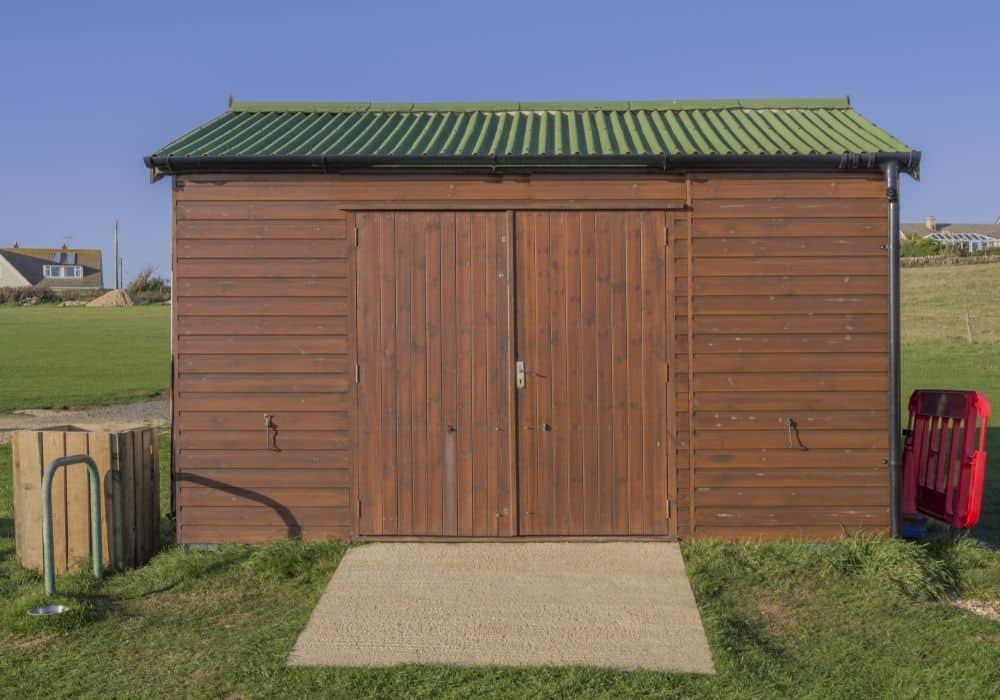
Termites are a common pest problem in a home. They are usually found in old structures that have not been appropriately treated or those built with materials that weren’t suited for pest control. It is crucial to know how to prevent termite infestations in your shed.
Here are some things you can put around the bottom of your shed to prevent termites from getting into it.
Fill In the Cracks
If there are any holes or cracks in your shed, fill them with caulk. This will make it challenging for termites to get into the building and eat away at it. You could also use silicone caulk around the sides of your shed, but this is not as effective at keeping them out of the building.
Use Air Duct Tape
Air duct tape is an excellent method for taping off areas of your shed where you do not want termites entering. It’s cheap, easy to install, and works very well at sealing off areas where insects might be able to enter from outside onto the inside of your shed.
Factors To Consider When Building the Bottom of Your Shed
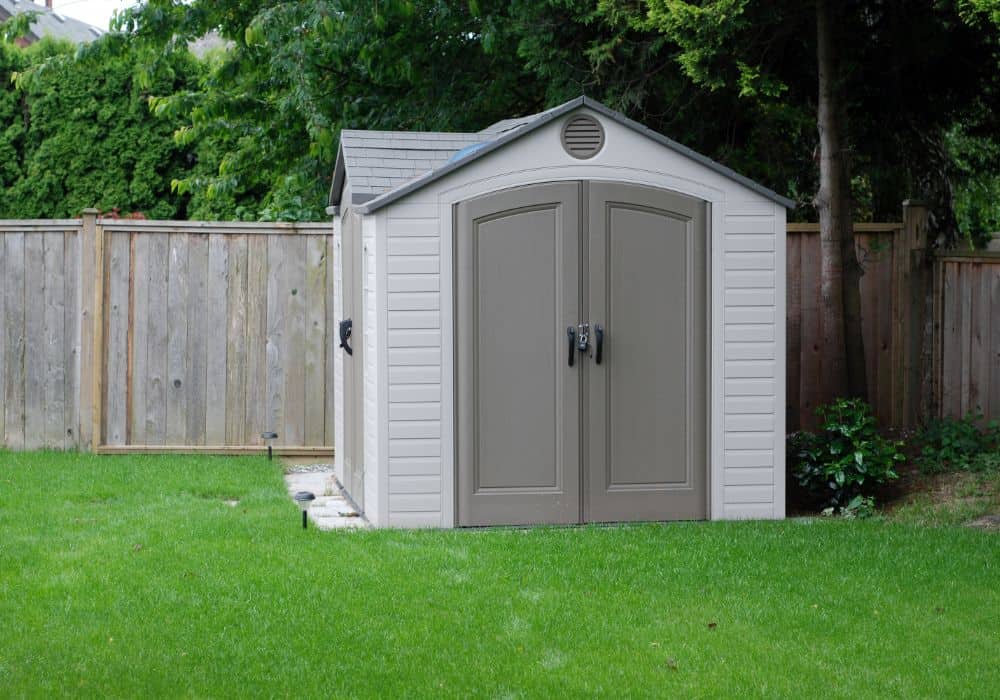
There are several factors you need to consider when choosing what to use at the bottom of your shed:
Purpose of the Shed
If you intend to store heavy equipment or materials, consider using gravel or concrete at the bottom of the shed. The main reason is that concrete will not compress and damage your flooring. And since it’s much heavier than gravel, it will also weigh down any items stored on top of it. Gravel provides great support for woodworking tools, such as saws and drills, which can be pretty heavy.
If you plan to store equipment such as lawnmowers or snow blowers in your shed, consider an easy flooring option to clean and maintain. A concrete flooring option is ideal because it resists moisture and provides a smooth surface for storing items like lawnmowers or snow blowers.
Type of Soil Available in Your Area
If you live in an area with clay soil around your property, using that type of material for the bottom layer in your shed will drain well and be very stable over time. Consider using sand or gravel if you live in an area with rocky soil nearby your property.
Conclusion
No matter how you build a shed, the first thing to do is create a solid foundation to support the structure. The scope of your shed will dictate the size of the footer you should use, which means the material you put at the bottom area will differ depending on its size. Don’t settle for just anything at the base of your shed. Here are some of the top skirting options to consider:
- Concrete blocks
- Gravel
- Lattice
- Vinyl panels
- Metal panels
- Faux stone
- Treated plywood
Find something that is sturdy and won’t deteriorate over time. Avoid using stones if possible as they may erode too quickly due to exposure to water and humidity. If you have any questions or suggestions on what to put around the bottom of the shed, feel free to leave us a comment, and we will get back to you!
